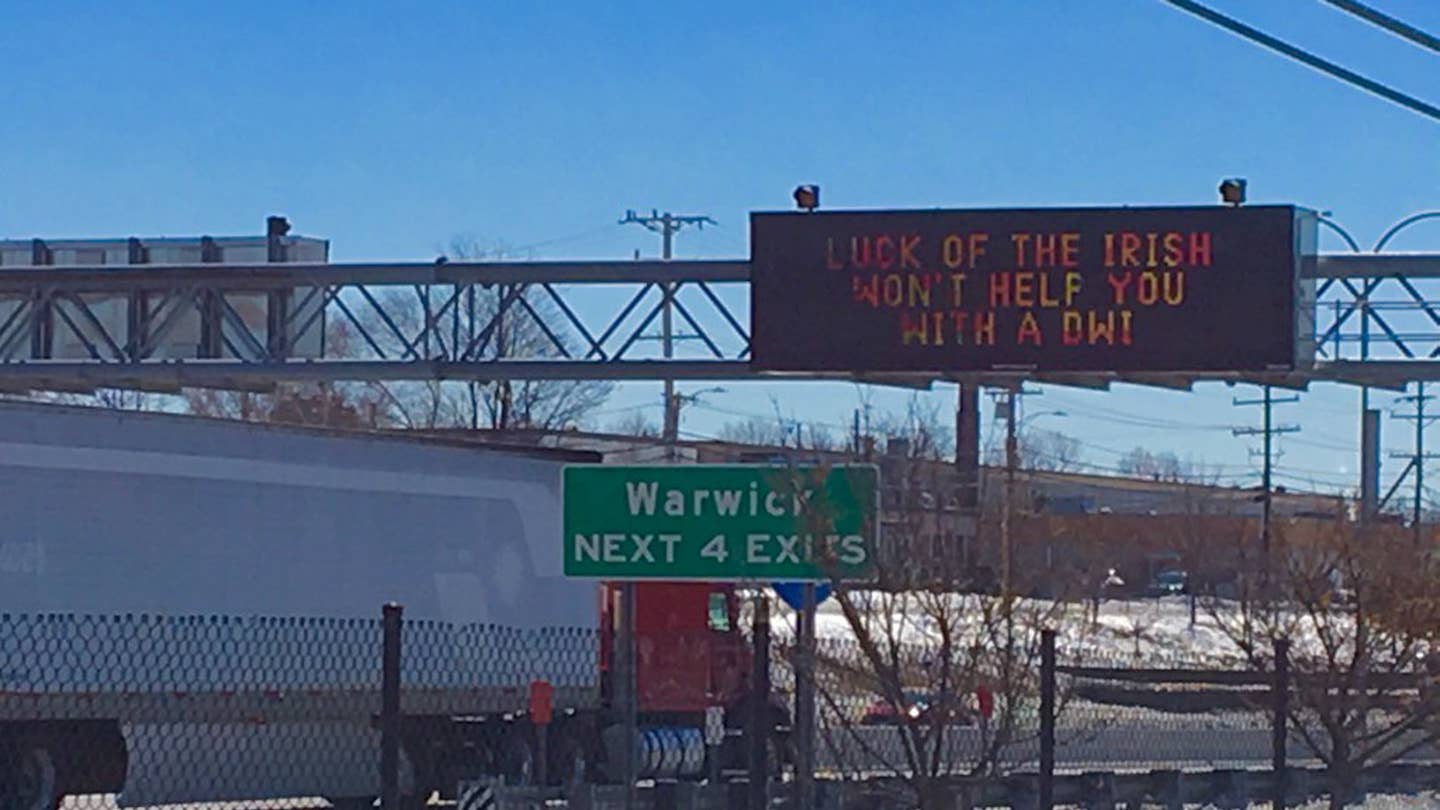Feds Want States to Cut the Jokes on Highway Signs
Breaking News: The federal government lacks a sense of humor.

On many United States interstates and state highways, you'll find variable message signs (VMS) that display ever-changing notices to warn drivers of delays, adverse weather conditions, or crashes ahead. When they aren't being used for specific alerts, oftentimes they'll display broader messages, like seatbelt reminders, or tell motorists not to drive drunk. Sometimes, states have fun with those messages and work little jokes into them. However, the U.S. Department of Transportation (DOT) must have lost its funny bone, because it's telling the comedians to knock it off.
The Federal Highway Administration, a subsection of the DOT, has issued new guidelines for safety messages that forbid funny messages, as it claims they're distracting. However, there's an argument to be made that the opposite is true. You're taking your eyes off the road to read the sign regardless of its humor, or lack thereof. Funnier signs are more memorable, increasing the potential the message might be better received.
Plenty of states get playful with their VMS messaging, and the result can be genuinely funny. Some of my favorite documented signs over the years are "Visiting in-laws? Slow down, get there late," from Ohio, and "Don't drive Star Spangled Hammered," from Pennsylvania. But if puns or jokes get a bit too complicated, there's a worry that not all drivers will get the point.
For example, according to the Wall Street Journal, the Ohio DOT ran a holiday safety message around Christmas time that referenced the classic movie A Christmas Story. The sign read: "Life is fra-gee-lay, drive safe." For those who've seen the movie, the sign makes sense and is a cute, timely nod. For those who haven't seen it, "fra-gee-lay" may as well be nonsense. A DOT study in 2022 found that many drivers didn't understand the funny messages they saw on road signs.
Another legitimate issue with lighthearted highway signs is that they can be too funny or popular, causing drivers to take out their phones while behind the wheel to snap pictures.
Despite the potential downsides, state DOTs argue that more humorous signs get their messages across better because drivers actually pay attention to them, without tuning them out immediately. According to Tripp Shealy, Virginia Tech professor of civil and environmental engineering, there's merit to that. While it's impossible to tell whether more drivers are actually changing their behavior based on funny signs, a study from 2020 proves that people are more engaged by humorous messages. Shealy's study measured blood flow to the prefrontal cortex to determine which sorts of signs received the most cognitive attention, and the results showed that funny signs do the trick.
“My recommendation would be that they’re useful, and humor should be allowed, from what we studied,” Shealy said, per WSJ.
It seems like there's a happy medium here, where states can add comical but easy-to-understand messages that engage drivers more than boring, straightforward ones, without making them overly specific and potentially confusing. Something like Mississippi's "100 is the temperature, not the speed limit," is pretty easy to understand; references to movies not everyone's seen, arguably less so.
Got tips? Send 'em to tips@thedrive.com
